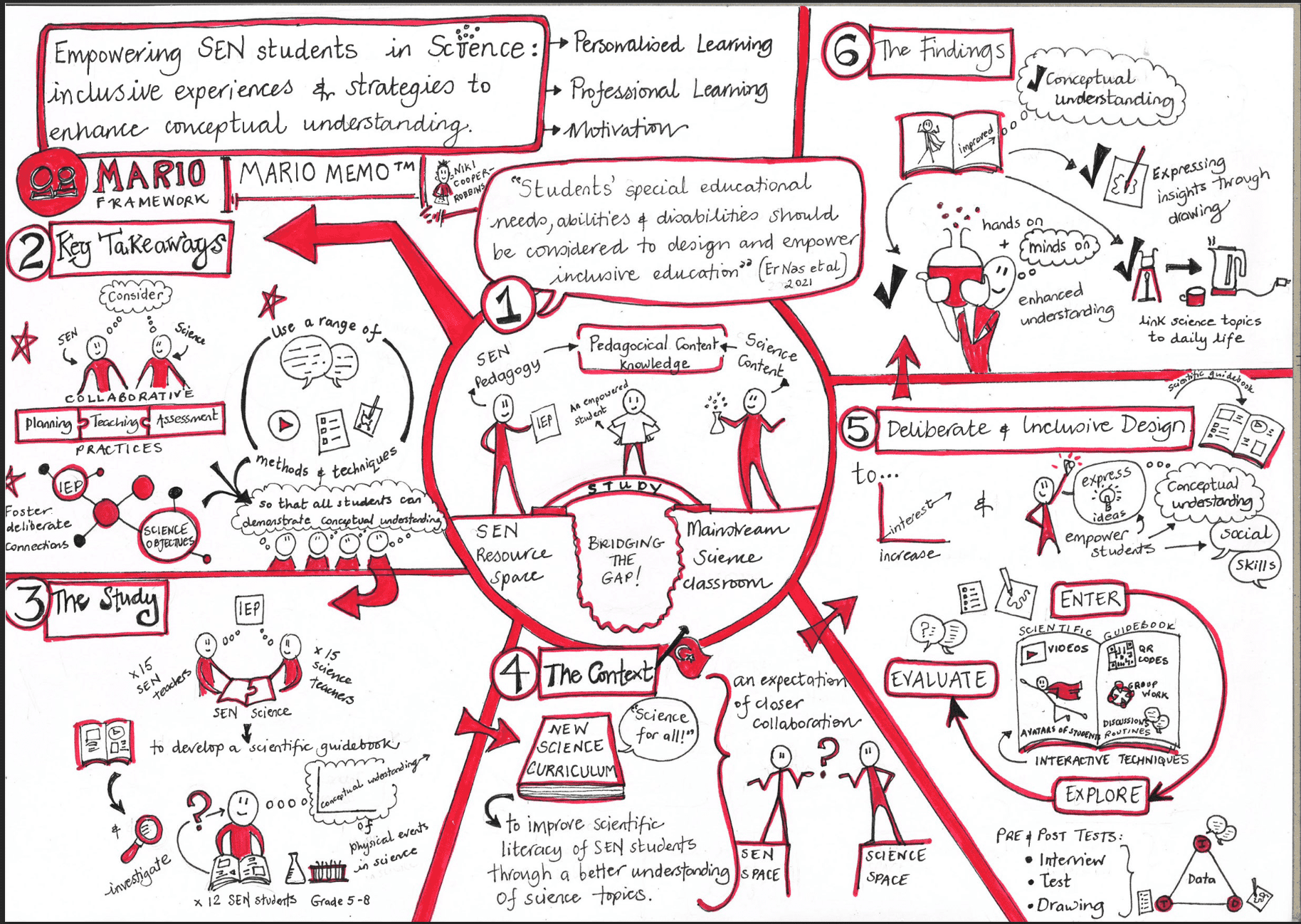Key Takeaway:
As educators, we must consider our collaborative planning, teaching, and assessment practices for Special Educational Needs (SEN) students to establish a deliberate connection between their Individual Education Program (IEP) and mainstream science objectives. In the science classroom, this might include using a range of methods, techniques and strategies that will enable all students to demonstrate their conceptual understanding of science as well as to build interest and confidence in the subject. —Niki Cooper-Robbins
Scientific Literacy for SEN Students
This article outlines a Turkish study conducted with 12 grade 5-8 SEN students and the contributions of 15 science and SEN teachers. The aim of the study was to:
- develop a scientific experimental guidebook for the students;
- investigate the book’s effect on the students’ conceptual understanding of physical events in science.
The study took place against an identified, national need to improve the scientific literacy of SEN students through a better understanding of science topics. The launch of a new curriculum brought with it an expectation of closer collaboration between the science and SEN teachers. The importance of this research becomes apparent when you come to realize that in this context, it is the norm for SEN students to receive their Turkish, math, and science education in the separate SEN resource space as opposed to the mainstream classroom. “Resource rooms take mainstream students’ learning needs into consideration,” and this was the missing element (excuse the pun!) in the science classroom. In contrast, the science teachers had the subject knowledge, but the SEN teachers did not. The purpose of the scientific experimental guidebook was to bridge the gap referred to as ‘pedagogical content knowledge’ between the SEN and science environments.
Deliberate & Inclusive Design
The guidebook incorporated interactive techniques to increase interest in and attitudes towards science and to empower students to express, support and generate their ideas in a range of ways. Avatars of the students and QR code links to YouTube videos of experiments were designed to build confidence, interest and belonging. Discussion-based routines to support the introduction, exploration and evaluation of concepts played a key role in the simultaneous development of conceptual understanding and social skills.
Findings
The results of the study showed that the guidebook was successful in that it did support conceptual understanding in a positive way. The data revealed that the “hands-on and minds-on” experiences enhanced understanding, and the option to express insights through drawings proved more successful than the tests and interviews. When considering why, the reason given was the students’ complex and varying profiles. For example, students with dyslexia or dysphasia were less inhibited when conveying understanding through drawings as opposed to writing or speech.
The study identified that the students struggled to transfer knowledge to new situations, and this was particularly evident with the more abstract concepts. The main finding, therefore, was that learning was more effective when the learning experiences were multi-sensory and interactive.
In addition, the study was found to be “in harmony with Dilber’s (2017)1 views, emphasizing that science topics should be contextually linked with daily life … Moreover, such a learning environment (i.e. conducting science experiments within small groups, watching experimental videos, and discussion about the results) may have enabled [SEN students] to imagine the concept in their minds.2 This means that peer learning and effective teaching strategies overcome students’ difficulties in understanding science concepts.”3

Summarized Article:
Er Nas, S., Akbulut, H. İ., Çalik, M., & Emir, M. İ. (2021). Facilitating Conceptual Growth of the Mainstreamed Students with Learning Disabilities via a Science Experimental Guidebook: a Case of Physical Events. International Journal of Science and Mathematics Education, 45–67. https://doi.org/10.1007/s10763-020-10140-3.
Summary by: Niki Cooper-Robbins—As an ESL Coach, Niki is an advocate for the needs of language learners and, through the MARIO Framework, endeavors to nurture and celebrate linguistic diversity in education.
Additional References:
- Dilber, Y. (2017). Fen bilimleri öğretmenlerinin öğrenme güçlüğü tanılı kaynaştırma öğrencileri ile yürüttükleri öğretim sürecinin incelenmesi / Examination of the instructional process carried out by the science teachers with mainstreaming students diagnosed learning disabilities [Unpublished Master’s thesis]. University of Karadeniz Technical.
- Talbot, P., Astbury, G., & Mason, T. (2010). Key concepts in learning disabilities. Sage.
- Thornton, A., McKissick, B. R., Spooner, F., Lo, Y., & Anderson, A. L. (2015). Effects of collaborative pre-teaching on science performance of high school students with specific learning disabilities. Education and Treatment of Children, 38(3), 277–304. https://doi.org/10.1353/etc.2015.0027.
